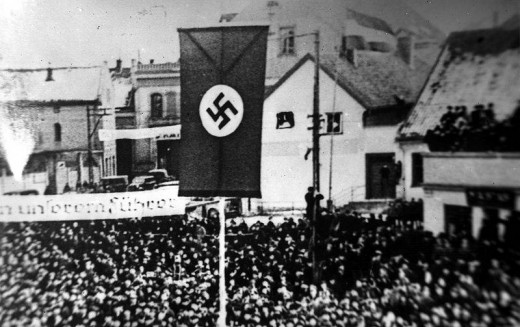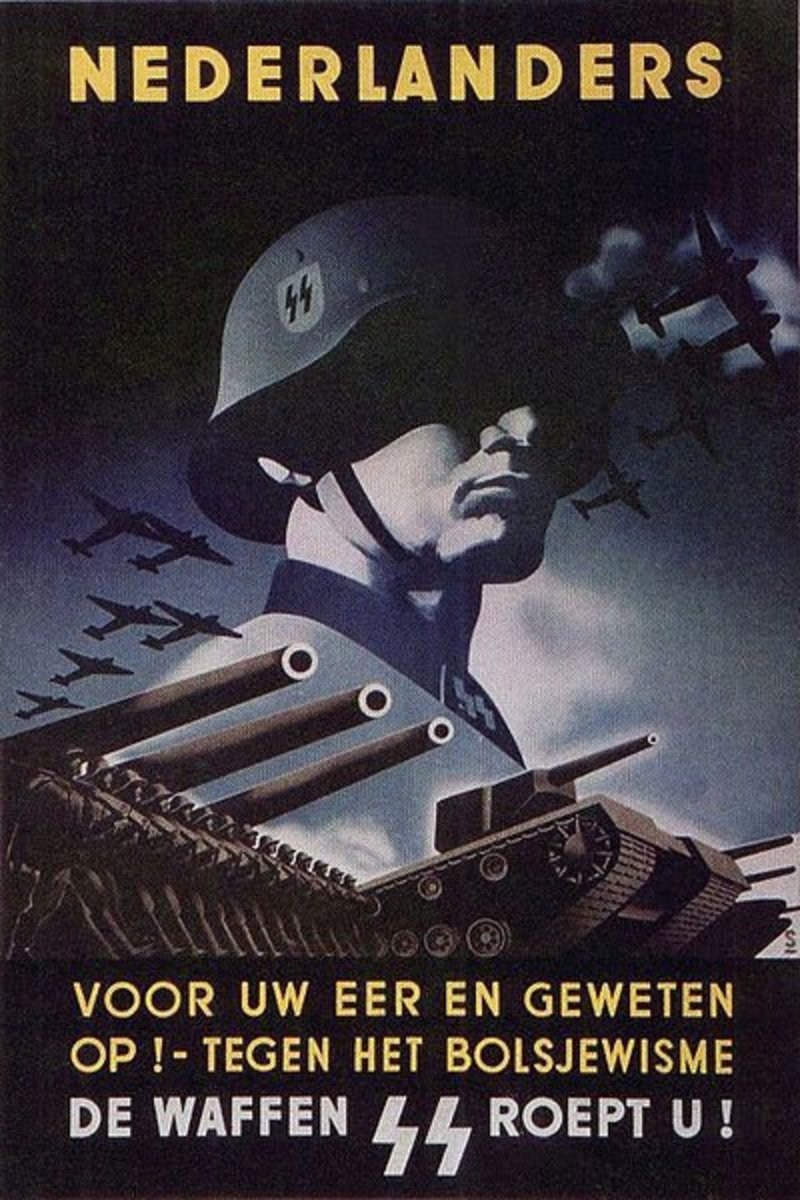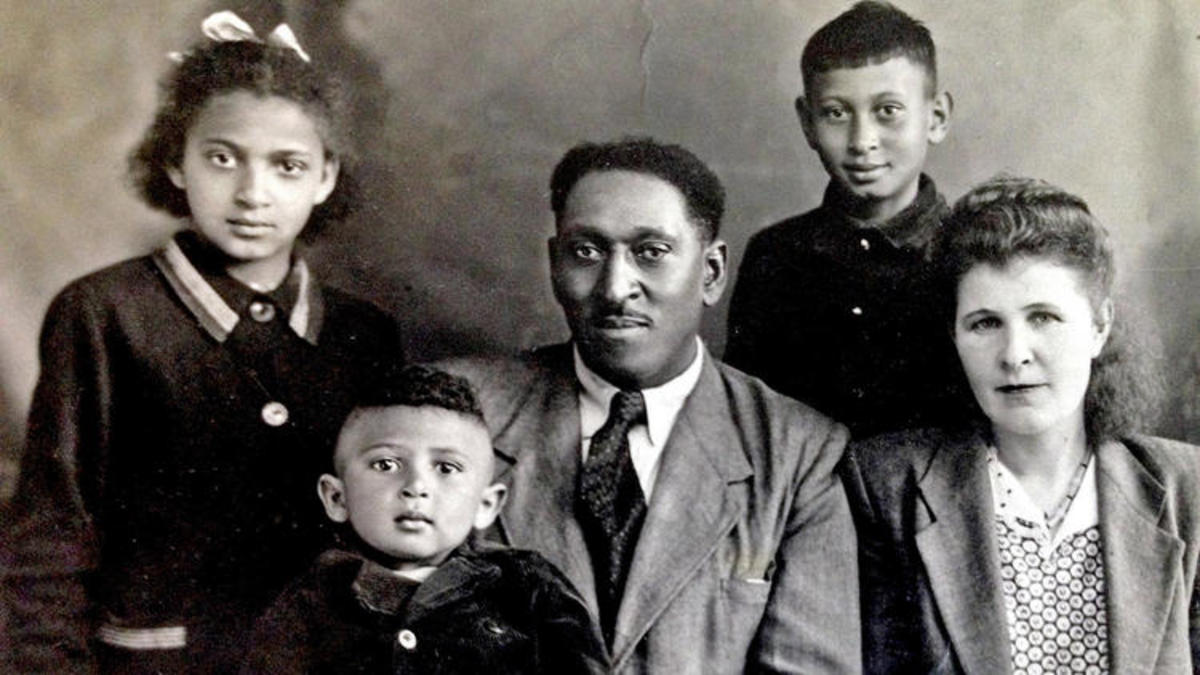How Nazis Cleverly Breed Hate

Did you learn something new about the Nazis from this essay?
The uncanny ability the Nazis have to affect people’s reactions, manipulate the media and use the law to their benefit in order to uphold an image of intimidating power is vastly overlooked and discredited by the general public.
As almost everyone knows, the Nazi movement for a new social order started in Germany under Adolf Hitler in the late 1930’s. His goal was to create a purely Aryan race and exterminate Jewish, black and homosexual people, just to name a few.However, despite his malicious intent, Hitler was a brilliant speaker and strategist. He utilized his compelling words and clever propaganda to the fullest extent to gain support. Perhaps Hitler worded his strategy dealing with propaganda best when he said, “All propaganda has to be popular and has to accommodate itself to the comprehension of the least intelligent of those whom it seeks to reach.” (www.thinkexist.com)
Essentially, Hitler was implying that he would recruit the weak and attack the weak. He would use his propaganda to persuade the German population in search of a common purpose as well as target submissive, helpless and perceived subservient groups to abolish from existence.Since Hitler gained a large following that believed in the same cause with equal enthusiasm as he had, he then had the capability to exploit and terrorize those desired groups. The terror tactics that the Nazis used gave them the leverage to manipulate how other countries reasoned with them during WWII.It was quite a successful period for Nazis and a dreadful nightmare for “inferior” races, especially the Jews.Hitler eventually committed suicide in 1945, ending the war, but not the nightmare for the Jewish population.
While the popularity of the Nazi party did decrease after Hitler’s death, it did not disappear. Nazis still existed in Germany and even had influence on the United States.George Lincoln Rockwell founded the American Nazi Party in the 1960’s. (Downs, 31) He was a very charismatic speaker who drew rather large audiences, consisting of followers and those who opposed his views.As the Party became more well-known, Rockwell would give nationwide lectures at colleges and universities and produced books and articles, but would preach White supremacy rather than the Aryan race.(Gibson, 25) He wisely changed his propaganda approach in accordance to the interest of his intended listeners.This was a witty decision because it gave them greater potential to attract more people to join the American Nazi Party.Unfortunately for the Nazi faction, Rockwell was killed in 1967 by a former party member. (Gibson, 25) The death of Rockwell resulted in the “splintering” of the group; one of the splinter groups was called the National Socialist Party of America, started by Frank Collin.(Gibson, 26)
Frank Collin was similar to Rockwell in that he was very vocal and clever. He held many demonstrations in Chicago parks, such as Marquette Park, to express his views on white supremacy. As Rockwell displayed in the past, strategic targeting was present for Collin too.Marquette Park in 1977 was described in the book Nazis in Skokie as being associated with “’white militancy’: life on the fringe of the slums, a sense of insecurity, threatened property values, and an educational background not conducive to drawing fine civil libertarian distinctions.”(Gibson 20) Obviously, this was a prime area for Nazis to hold demonstrations because it was in a mainly white area that was starting to be rather unwillingly integrated with black people.Collin used his intelligence and knew that the white people living in the area were not happy with that fact so he held demonstrations there in order to get his message across while also hoping to recruit more Nazis. Like Hitler, but on a much smaller scale, Collin wanted to manipulate the Caucasians’ views in Marquette Park while they were searching for an answer as to why their community was changing from white to black.It was also an effective way to send a message to the black people that were entering the Marquette Park region that they were not welcome.
Although due to a few violent incidences that were caused by demonstrations by the NSPA, the city of Chicago used an insurance ordinance of $250,000 to cover for damage liability.(Downs, 20)Being a small coalition, Collin could not afford this so he contacted the American Civil Liberties Union (ACLU) and filed a suit.As David Hamlin of the ACLU claimed in his book The Nazi/Skokie Conflict, “Collin faced two choices.Either he could wait out the litigation in the hope that he would eventually win and be able to return to Marquette Park…or he could forget Marquette Park and fill the time with other activities, activities aimed at an entirely different audience.”(Hamlin 23) Collin made the decision to abandon his original idea and focus on a new location. Skokie, Illinois was his alternative demonstration spot. Once again, Collin had a very direct reason for targeting that location; there were 30,000 Jewish people that resided there and about 800 to 1,200 out of the Jewish population were WWII Holocaust survivors.(Downs, 21) Frank Collin knew this would create publicity so he wasted minimal time to make all Jewish residents aware that he and the NSPA were planning a march there.
The intelligence of Collin is not acknowledged by many due to the beliefs he preached. However, he surely understood how to go about sparking a reaction out of people. Even before the Skokie idea came about, the NSPA sent out tens of thousands of leaflets to the North Shore suburbs which implied their strategy of intimidation. (Downs 28)When Collin announced his plans to march in Skokie, the reaction he received was just as expected.As Collin explained, “I planned the reaction of the Jews.They are hysterical.”(Downs 19)They were, indeed, hysterical. The NSPA only had to mention their intent on marching in Skokie on May 1, 1977 and the Holocaust survivors couldn’t control their rage or fright.However, when the ACLU determined that the NSPA should have the right to march, people went berserk.
One Jewish woman stated, “We were more nervous than before.How could we react, seeing the boots, the swastika…at a time like that you get so nervous. We weren’t responsible.We don’t know if we can control ourselves.” (Downs 86)
Collin’s intentions forced the Jewish to react strictly on impulse and triggered emotions.There were even counterdemonstrations that were being planned by the Jewish Defense Leaders that paralleled with the day that the Nazis marched.These responses practically made the Jewish people appear like irrational, unknowledgeable people and the Nazis as the possible victims.Hamlin states that while receiving calls in the ALCU from enraged Jews that “the anger was not the most common element in the calls. The single most common factor among the calls was…nobody knew the facts of the dispute.” (Hamlin 66) This proves that the media portrayed the incident in a different light than what was really going on.
The way the media would be handled was premeditated by Collin and the NSPA.Collin was wise enough to paint a picture to the Jews through the media that the NSPA would be able to get just what they wanted.In order to incite fear and gain the perception of an intimidating power, Collin understood he needed to get national attention.During this time there were only about 1,000 to 1,200 Nazis throughout the whole United States, about the same amount of Holocaust survivors in Skokie alone.(Gibson, 27) Yet, the ability of Collin to manipulate the media to the NSPA’s advantage made it seem like there were 1,200 members (when there were really only about 20) in the NSPA due to the ruckus they caused and exposure they received.In an excerpt by David Hamlin he describes Frank Collin in this way:
Collin is all but made for television.Just as a bad auto accident makes for good news footage---scenes which are both fascinating and repulsive---so Frank Collin makes for a good item on the evening news.His symbols make him instantly recognizable. He is visually noisy, interesting, emotional and there is always some sort of action near him…Frank Collin is more easily recognized by most Chicago-area residents than any of the last five Republican candidates for the office of mayor of Chicago.And Collin has gotten a whole lot more press than all five of them combined. (Gibson 27)
His scheme is of “misdirection” as Hamlin puts it. The fact that he really only had a group of about 20 men backing him in the NSPA was irrelevant. The real impact consisted of what people perceived him and his group to be, and that was a threat. However, Collin was conscious that what the people in Skokie believed was appropriate for him to be able to do and what the Nazis’ rights to actually march were could be much different.
The laws and rights, particularly the First Amendment, were factors that were on the Nazis’ side and they referred to them frequently.In fact, Frank Collin openly admitted to using the First Amendment to his benefit at Skokie.He was in control.He possessed a double-edged sword. As Aryeh Neier points out in Defending My Enemy, “I could never bring myself to advocate freedom of speech in Skokie if I did not believe that the chances are best for preventing a repetition of the Holocaust in a society where every incursion of freedom is resisted… suppression of freedom is…a sure prescription for disaster.” (Neier 3) In other words, if freedom of speech was resisted for the Nazis’ or every time a group disagreed with another group’s viewpoints then eventually only government would have freedom of speech; also known as a dictatorship, which Hitler believed in.
Collin knew his rights and that the town of Skokie could only restrict the NSPA so much before it was deemed unconstitutional.The first restriction they put on the NSPA was immediately after the incident in Marquette Park.Skokie made their own liability insurance ordinance to prevent them from marching as well as restrictions to demonstrations that “incite violence” and wearing material of symbolic significance.(Gibson 30) However, that was modified by the Illinois Appellate Court and allowed them to march without their swastikas because it was a form of hate speech or “fighting words”.(Gibson 31) The ACLU did not agree and appealed to the Supreme Court arguing that “a speaker who gives prior notice of his message has not compelled a confrontation with those who voluntarily listen.” (Gibson 32) Sending out the leaflets proved to be another intelligent decision by Collin and the NSPA because they forewarned the citizens of Skokie.No one could force the Jewish people to listen to the NSPA’s convictive speeches unless they chose to go to the demonstration themselves.
While the NSPA and Collin were fighting the laws that were attempting to constrain them, they were also working within them.Collin was very willing to compromise even though he felt he was being unfairly restricted.Ultimately the views by the ACLU and Supreme Court would be in his favor because Skokie attempted to enforce unconstitutional, biased laws, such as the limitations on wearing the swastika symbol.Judge Decker, of the Federal Court for the Northern District of Illinois said of Skokie’s attempted restraints, “The First Amendment embraces the freedom to advocate even that government ought to be violently overthrown, let alone that it ought to be controlled by civilians.” (Gibson 33)
The reason why Collins was so in control during these court cases was because he was not blinded by pure emotion or desperations like the citizens of Skokie were.Whenever an issue would come up dealing with legality, he knew to call on his ally, the ACLU, and review the constitutionality of the conflicts being presented. Unfortunately for the NSPA, every time it would appear that the march in Skokie would take place, another intentional delay would be put on it by the inhabitants of Skokie.Finally, as a result of a well-fought 15 month battle, the NSPA was granted the privilege to march in Skokie without their swastika arm-bands. (Downs 2) However, by that point, Collin had already accomplished what he wanted to in Skokie; he instilled fear and gained publicity.His goal was met.He essentially won the “war” with Skokie because he gave an unofficial, protected demonstration through the court system to the whole country.Everyone already knew what Collin and the NSPA stood for, but Collin exploited the fact that the “inferior” groups that he was prejudiced against were not fully safe.The Nazis could continue to terrorize those “lesser” groups if they chose to because they were protected by the First Amendment.Collin and the NSPA actually did hold marches in Marquette Park shortly after the aforementioned restrictions were cleared in 1978. (Neier 8)
Some may argue that Nazis do not deserve credit for their ideas because they are evil and usually end in demise.However, one must keep in mind that Nazis are always confronted when they want to express their beliefs.Because of these challenges, sometimes they are put under a microscope, dissected and forced to make an ill-advised decision as a result of the pressures around them.One bad judgment could be the demise of a leader or group.In Hitler’s case, it would more than likely be the decision to invade Russia in the middle of the winter.For George Lincoln Rockwell, it is possible that he may have chosen to strengthen his relationship with John Patler, his murderer and former Nazi member.Frank Collin was a little different than the other two Nazis though.He probably would have changed something he couldn’t really control: his Jewish ancestry.Aryeh Neier suggests that the reports of his Jewish roots caused mistrust and a lack of unity with Nazi organizations throughout the country under his leadership. (Neier 19)Also, as if that wasn’t detrimental enough to his accreditations, he was also convicted of molesting two 10-year-old boys.That was enough to get him expunged as the NSPA leader.Still, the downfalls of these Nazi figures do not eliminate the fact that they were well informed and knew how to exercise their rights.
The Nazis are actually forced to be clever because nothing is easy for them.If they are not cunning and aggressive in their approach, then they are unable to purvey an image of control.The fact that they don’t give up until their goal is reached proves their sincere passion for their cause.While attempting to accomplish their aspirations, Adolf Hitler, George Lincoln Rockwell and Frank Collin did a noteworthy job of manipulating emotions, media and the law.In Hitler’s case, he truly affected the whole world.Nazis do not get appropriate recognition for their creative ideas because they are considered, above all, evil.Although, in their eyes, what they are preaching is the way things should be.That is probably why they have had a huge influence on people and also explains why they are taken seriously.Ironically, their group is a minority that expresses ostracized beliefs by the greater population of the world. Still, one can only imagine what results could have come from the Nazi parties had they put their efforts towards manifesting good throughout the world.





